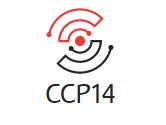Oxidative Stress and Nitrosative Stress Health Research with BioxysOxidative Stress and Nitrosative Stress Bio-Markers and Antibodies |
|
||||||||
Cellular oxidation and reduction of molecules. They for 8OHdG as marker and free radicalsStress MarkersA free radical has unpaired electrons. Biological free radicals react with various organic substrates. Free radicals are the result of naturally occurring processes such as oxygen metabolism, DNA dammage and inflammatory processes. Cells will use oxygen to generate energy. Than free radicals will be created as a consequence of ATP production by the mitochondrium. Exercise can increase the levels of free radicals as can environmental stimuli such as ionizing radiation (from industry, UV exposure, cosmic rays, and medical X-rays, Roentgen irradiation), environmental toxins, altered atmospheric conditions (e.g. hypoxia and hyperoxia), ozone and nitrous oxide (primarily from automobile exhaust).Inducers of oxidative stress are smoking, alcohol consumption even bottled baby nutrition instead of breast feeding, long international flights with radioactive radiation exposure, roentgen medical pictures in the past and X ray exposure, they will affect levels of free radicals. Radical species may combine to form other more damaging or toxic species such as peroxynitrite (O=NOO¯), a product of superoxide and nitric oxide radical reaction. Free radicals react with key organic substrates such as exosomes, lipids, proteins, and DNA. Oxidation of these bio-molecules can damage them, disturbing normal functions and may contribute to a variety of disease states.It has been noted that certain organ systems are predisposed to greater levels of oxidative stress or nitrosative stress. Those organ systems most susceptible to damage are the pulmonary system (exposed to high levels of oxygen), the brain (exhibits intense metabolic activity yet has lower levels of endogenous antioxidants), the eye (constantly exposed to damaging UV light), circulatory system (victim to fluctuating oxygen and nitric oxide levels) and reproductive systems (at risk from the intense metabolic activity of sperm cells). Nearly every organ system can be found to have an Oxidative or Nitrosative “Achilles heel”. With the current 2020 understanding that free radicals can act as cell signaling or “messenger” agents it is likely that they also play a role in normal cellular function as well as various disease etiologies.Reactive Oxygen Species (ROS) is a term collectively describing radicals and other non-radical reactive oxygen derivatives. These intermediates may participate in reactions giving rise to free radicals or that are damaging to organic substrates. ROS in living organisms include the following:
Reactive Nitrogen Species (RNS) are radical nitrogen-based molecules that can act to facilitate nitrosylation reactions. Reactive Nitrogen Species (RNS) include:
Many other radical species can be formed by biological reactions, for example: phenolic and other aromatic species are often formed during xenobiotic metabolism as part of natural detoxification mechanisms. Oxidative StressOxidative stress occurs when the generation of ROS in a system exceeds the system’s ability to neutralize and eliminate them. The imbalance can result from a lack of antioxidant capacity caused by disturbance in production, distribution, or by an overabundance of ROS from an environmental or behavioral stressor. If not regulated properly, the excess ROS can damage a cell’s lipids, protein or DNA, inhibiting normal function. Because of this, oxidative stress has been implicated in a growing list of human diseases as well as in the aging process. Nitrosative StressNitrosative stress occurs when the generation of RNS in a system exceeds the system’s ability to neutralize and eliminate them. Nitrosative stress may lead to nitrosylation reactions that can alter protein structure thus inhibiting normal function. AntioxidantsAn extensive, highly effective group of protective agents and defense mechanisms referred to collectively as the Antioxidant Defense System (ADS), acts to regulate oxidative reactions. The ADS includes enzymes and antioxidants to prevent the start of oxidative damage and/or control its spread. There are also enzymes to repair oxidative damage, and mechanisms to target damaged molecules for destruction and replacement. Essential antioxidants are either endogenous (internally synthesized) or exogenous (consumed). They are typically categorized as scavenger antioxidants and prevention antioxidants. Scavenger antioxidants remove ROS and include the following categories:
Preventative antioxidants hinder the formation of new ROS. These antioxidants are proteins that bind ROS to protect essential proteins. The group includes albumin, metallothionine, transferrin, ceruloplasmin, myoglobin, and ferritin. ROS and RNS today:Researchers are now making rapid progress in understanding the role of oxidative stress and nitrosative stress in cardiovascular diseases such as atherosclerosis, ischemia/reperfusion injury, restenosis and hypertension; cancer; inflammatory diseases such as acute respiratory distress syndrome (ARDS), asthma, inflammatory bowel disease (IBD), dermal and ocular inflammation and arthritis; metabolic disease such as diabetes; and diseases of the central nervous system (CNS) such as amyotrophic lateral sclerosis (ALS), Alzheimer’s, Parkinson’s, and stroke. The increased awareness of oxidative stress related to disease and the need to measure the delicate balance that exists between free radicals and the systems in place to regulate them has given rise to a demand for new research tools. |
|||||||||

Collaborative Computational Project No. 14